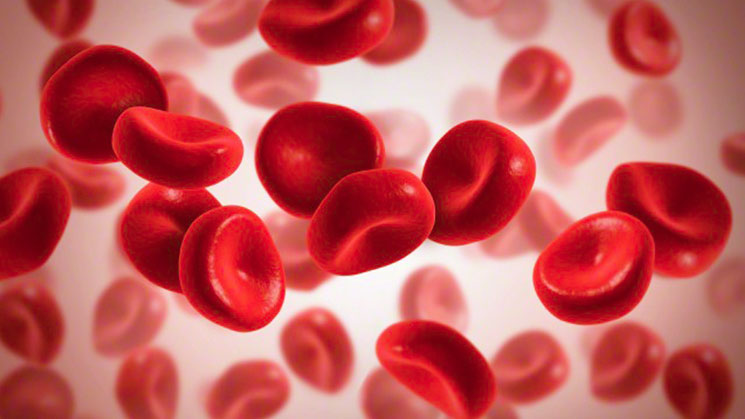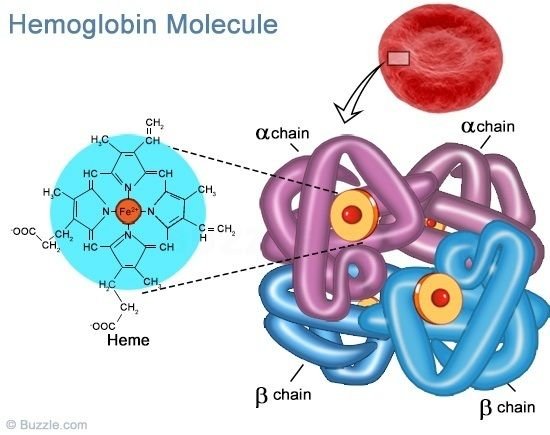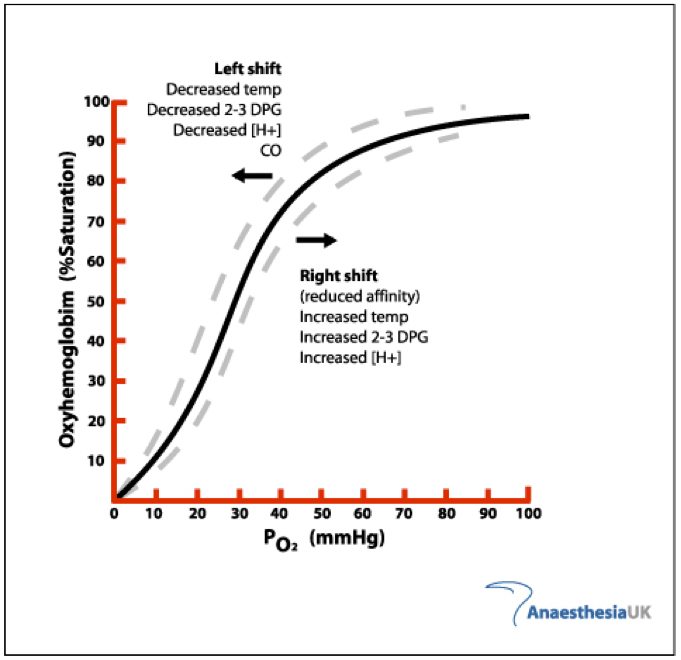Hello, Steemit, today I want to talk you about the hemoglobin. In the perfect machinery that is our human body, the circulatory system, is constituted by vessels and capillaries that are responsible for transporting the blood, which as we know is related to most of the functions of our body, since through it essential nutrients and oxygen are transported to all tissues and organs of the body.
Red blood
Blood as a vital fluid, is composed of cells: red blood cells, white blood cells and platelets mainly. The remaining volume is plasma, ie the liquid part in which the cells are suspended. Red blood cells are the ones that carry oxygen from the lungs to all tissues because they contain hemoglobin, a protein that in addition to giving blood its red color, is responsible for transferring oxygen molecules to the tissues and carbon dioxide into the lungs , specifically at the level of the alveoli for the process of hematosis (gas exchange) to occur.

Blood
Hemoglobin as an oxygen transport agent
Iron (Fe) is a molecule that plays a very important role since it is a fundamental constituent of hemoglobin, being essential for life. Hemoglobin is a protein with a quaternary structure, ie, it consists of four polypeptide chains: two α and two β (adult hemoglobin- HbA); two α and two δ (minor form of adult hemoglobin- HbA2- normal 2%). Each contains a heme group as part of its structure and each heme group contains an iron atom (in a state of ferrous oxidation (+2)) coordinated by four nitrogen atoms in flat square arrangement. The octahedral coordination with respect to iron is completed by a nitrogen atom of another portion of the protein molecule and an oxygen molecule or a water molecule. Hemoglobin forms oxyhemoglobin (oxyHb) in the lungs by combination with oxygen that is then released into the tissues, while the deoxygenated form is called deoxyhemoglobin (Hb).
 Hemoglobin
The binding of oxygen to hemoglobin is reversible and depends on the partial pressure of oxygen in the blood ie the oxygen going into solution. The relationship between the tesion of oxygen and the saturation of Hb is described by the saturation curve of oxyHb. The hemoglobin dissociation curve is sigmoid, any change in the affinity of hemoglobin for oxygen, will result in a shift of the curve to the left or to the right. A shift to the left implies an increase in affinity and a shift to the right implies a decrease in affinity.
Hemoglobin
The binding of oxygen to hemoglobin is reversible and depends on the partial pressure of oxygen in the blood ie the oxygen going into solution. The relationship between the tesion of oxygen and the saturation of Hb is described by the saturation curve of oxyHb. The hemoglobin dissociation curve is sigmoid, any change in the affinity of hemoglobin for oxygen, will result in a shift of the curve to the left or to the right. A shift to the left implies an increase in affinity and a shift to the right implies a decrease in affinity.
Factors affecting the affinity of hemoglobin for oxygen
The hemoglobin dissociation curve can be affected by factors such as: increased carbon dioxide concentration, which decreases the affinity of hemoglobin for oxygen and produces a shift of the curve to the right. The pH, the increase of the hydrogenation concentration or decrease of the pH causes a shift of the curve to the right by an increase of H+ that, when fixed to the hemoglobin, decrease its affinity. This effect is called the "Bohr effect". Another important factor in the decrease of affinity is the inhalation of carbon monoxide, because this molecule can also bind to hemoglobin by a reversible reaction similar to that performed with oxygen, since they occupy the same place. The compound formed is called carboxyhemoglobin, the complex being formed up to 200 times stronger than the oxygen complex; thus, minimal concentrations of CO in the air breathed, will saturate large proportions of hemoglobin, preventing the transport of oxygen. Therefore, if a substantial part of the hemoglobin of the blood is converted to carboxyhemoglobin, the organism has an acute deficiency of oxygen that soon leads to death. So prolonged exposure to carbon monoxide can have significant consequences.

Saturation curve
Final Considerations
The function that hemoglobin fulfills is of vital importance for humans, since it carries the most important nutrient for us, oxygen. Low levels of hemoglobin can directly affect our energy levels because they reduce the amount of oxygen that is transported throughout the body. So it is necessary to have a balanced diet, avoid iron deficiency and consume red berries, such as strawberries.
If you liked the post and want to continue seeing more articles of this type, upvote, follow me and resteem.
References:
Beutler, E., & Waalen, J. (2006). The definition of anemia: what is the lower limit of normal of the blood hemoglobin concentration?. Blood, 107(5), 1747-1750.
Sakai, H., Sou, K., Horinouchi, H., Kobayashi, K., & Tsuchida, E. (2009). Review of Hemoglobin‐Vesicles as Artificial Oxygen Carriers. Artificial organs, 33(2), 139-145.
Steck, T. L. (1974). The organization of proteins in the human red blood cell membrane: a review. The Journal of cell biology, 62(1), 1.



@bape682 Like this post , upvote !!!!!! You can see my Blog, also posting medicine related science. Nice bro
upvote frome me. keep it up!